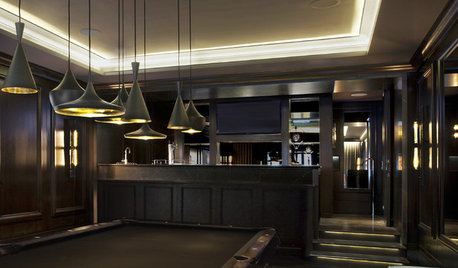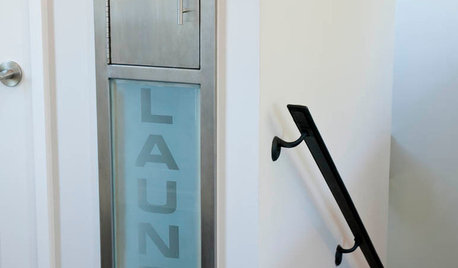Was ground via metallic flex conduit code back in the days?
Valdemar
10 years ago
Related Stories

BATHROOM MAKEOVERSRoom of the Day: Superstar Style for a Small Full Bathroom
Warm metals, a claw-foot tub, repurposed outdoor faucets and a special sink base contribute to this stellar renovation
Full Story
HOUZZ TOURSHouzz Tour: Modern Addition for a Historic Bungalow
A 1927 redbrick home in a downtown historic neighborhood of Phoenix gets a metal-clad modern addition
Full Story
HOUZZ TOURSHouzz Tour: Farm Fresh
Updates bring back the bygone charm of a 19th-century Texas farmhouse, while making it work for a family of 6
Full Story
POOLS8 Ideas for Petite Pools
Modest in size but big on looks and function, pools like these offer a private swim space without requiring lots of room
Full Story
REMODELING GUIDESContractor Tips: Finish Your Basement the Right Way
Go underground for the great room your home has been missing. Just make sure you consider these elements of finished basement design
Full Story
GARDENING AND LANDSCAPINGDream Spaces: 12 Decks That Rise Above It All
Tucked into upper levels, these inspiring outdoor spaces provide more privacy and relaxation above the fray
Full Story
MOST POPULARHow to Add a Backyard Shed for Storage or Living
Need a home office, a playspace or extra room for your stuff? Learn about off-the-shelf, prefab and custom sheds
Full Story
GREAT HOME PROJECTSHate Hauling Laundry? Give Dirty Clothes the Chute
New project for a new year: Install a quick route to the laundry room
Full Story
CONTRACTOR TIPSBuilding Permits: When a Permit Is Required and When It's Not
In this article, the first in a series exploring permit processes and requirements, learn why and when you might need one
Full Story
REMODELING GUIDESCool Your House (and Costs) With the Right Insulation
Insulation offers one of the best paybacks on your investment in your house. Here are some types to discuss with your contractor
Full Story







bus_driver
ValdemarOriginal Author
Related Professionals
Aurora General Contractors · Clinton General Contractors · Jefferson Valley-Yorktown General Contractors · Merrimack General Contractors · Middletown General Contractors · San Marcos General Contractors · Summit General Contractors · Waipahu General Contractors · Glen Avon Solar Energy Systems · Carson Solar Energy Systems · Evanston Home Automation & Home Media · Hacienda Heights Home Automation & Home Media · Leesburg Home Automation & Home Media · Oak Hill Home Automation & Home Media · Waukegan Home Automation & Home Mediabtharmy
ValdemarOriginal Author
bus_driver
halmc
ValdemarOriginal Author
btharmy
ValdemarOriginal Author
ValdemarOriginal Author
bus_driver
ValdemarOriginal Author
cold_weather_is_evil
Ron Natalie
ValdemarOriginal Author
btharmy
joefixit2
ajames54